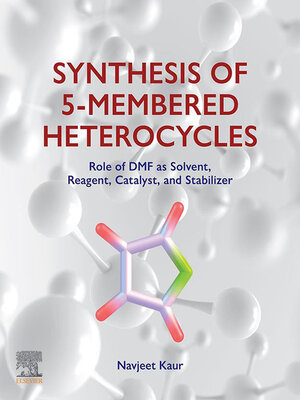Synthesis of 5-Membered Heterocycles
ebook ∣ Role of DMF as Solvent, Reagent, Catalyst, and Stabilizer
By Navjeet Kaur

Sign up to save your library
With an OverDrive account, you can save your favorite libraries for at-a-glance information about availability. Find out more about OverDrive accounts.
Find this title in Libby, the library reading app by OverDrive.



Search for a digital library with this title
Title found at these libraries:
| Library Name | Distance |
|---|---|
| Loading... |
Synthesis of Five-Membered Heterocycles: Role of DMF as Solvent, Reagent, Catalyst, and Stabilizer helps readers quickly assess possible synthetic approaches. The book's audience, researchers, academic professionals and synthetic chemists both in industry and academia will find detailed information about the synthesis of five-membered heterocyclic compounds using dimethylformamide. Over the years, heterocyclic compounds, especially five-membered, have drawn more attention of pharmaceutical community because of their therapeutic value. The formation of heterocyclic compounds has turned out to be the keystone of synthetic organic chemistry.
Dimethylformamide has played an important role in organic synthesis for a long time, and it is frequently utilized as a common solvent for chemical reactions and broadly used in industry as a reagent. It is a unique chemical and can play three other roles in organic chemistry, i.e., as stabilizer, reagent and catalyst. Due to its structure, DMF can participate in several reactions as a versatile building block for several units. - Includes comprehensive descriptions of heterocycle synthesis
- Highlights many methods for the synthesis of five-membered heterocyclic compounds using dimethylformamide
- Helps readers quickly assess possible synthetic approaches







